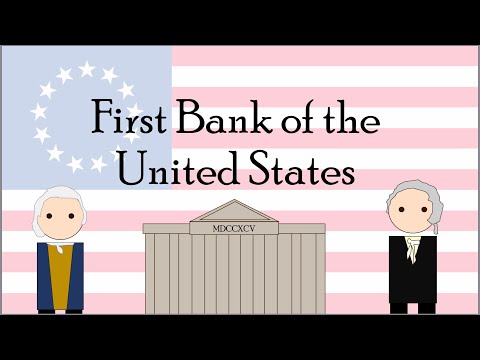In 1791, the United States government gave a charter to the first nationalised bank. The arguments for and against the establishment of such a bank stand today as some of the most important discussions on the constitutionality of the federal government’s powers.
If you enjoyed this video, please like and subscribe!
I now have created accounts on other platforms (Instagram and Twitter). Follow me there to see previews of upcoming projects, interesting history facts and anniversaries, and more!
Instagram: https://www.instagram.com/latemodernhistory
Twitter: https://mobile.twitter.com/LMH_yt
Script:
The early days of the United States were full of heated debates on how the country was to run. One of the most tumultuous divides was over whether or not there would be a national bank. The concept of a centralised bank was appealing to some Americans, namely Federalists, but to others, it seemed dangerously close to the same tyrannies they had just fought against.
The National Bank, as first proposed by Alexander Hamilton in 1790, was to start its funding by selling 10 million dollars in stock. 8 million dollars of stock were to be available to public shareholders. The other 2 million was to be purchased by the United States Government. However, the government was totally broke and did not have 2 million dollars. Hamilton suggested that the money should be acquired by taking out a loan with the National Bank (which, need I remind you, was the reason the government needed the money in the first place). Restrictions were put in place to minimise corruption such as a mandatory rotation of the board of directors. The bank was granted a twenty year charter starting in 1791. The newly chartered bank resulted in the government needing even more money to pay off debts as required by the charter. To solve this issue, Hamilton suggested an increase of tariffs on imported alcohol and increases to the tax on whiskey. These tax increases led to widespread rebellions known as the Whiskey Rebellion.
Thomas Jefferson and James Madison feared that the establishment of a National Bank would only help investors at the expense of the American citizens. A centralised bank would result in fewer local banks, hurting the agricultural, less commercial southern states. Additionally, the establishment of a national bank was not explicitly mentioned in the Constitution. As Jefferson and Madison argued, the Tenth Amendment reserved all powers not explicitly mentioned in the Constitution to the states, making a national bank unconstitutional. Their continued opposition to the bank led Madison to neglect to renew the bank’s charter when it expired in 1811.
The expiration of the first national bank wasn’t the end of the question of a nationalised bank. Just five years later, Madison’s administration chartered a second national bank which would become even more divisive in the following years. The first national bank was significant in the ongoing discussion of what powers the federal government can constitutionally exercise.
